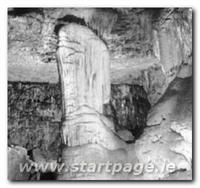Dunmore Cave

More than its monarchal beauty and architectural legacies, Ireland still has a lot of sights to offer, most especially tourists from non-European countries. From mythical places such as Newgrange and the Hill of Tara to the castles of Maynooth and Dublin, it also offers natural sights such as those in Glendalough and County Kilkenny.
If you're going to ask around the people living in Ballyfoyle, County Kilkenny about what is worth seeing in their place, they may refer you to the Dunmore cave. Though this is not a significantly large cave, it still remains as an object of interest for scientists and tourists alike, because it contains some of the finest calcite formations in Ireland. Like any other cave, it is mainly composed of limestone and it has about a quarter of a mile of passages within it.
Want some ghost stories? It is stated in an old chronicle that a Viking massacre was done there in 928 AD. About 44 bones of women, children and elderly people were found in the cave, believing that these were seeking refuge within the cave to hide from the raiding Vikings. It is also weaved within folklore and a lot of bizarre tales have been told about it. One account states that Dunmore Cave was once described as the mouth of a huge beast, with ten thousand teeth above his head and as many under his feet. Whoa. Who was patient enough to count all those teeth??
Apart from that, caves in the 17th century were also regarded as entrances to Hell, being so dark and gloomy, not to mention creepy. But during the 18th century, geologists and other professionals already started researching about and excavating the cave and wrote numerous reports about it which made it one of the most documented cave sites in Europe.
A cave wouldn't be interesting without these: treasures! Aside from the horrific discovery of skeletons, Viking treasures were also discovered here. These treasures paved the way for more archeological study of the cave and some more digging and renovation before it was opened to the public again in 2003.
Today, you wouldn't have to worry about entering a dark cave, or slipping on earth cracks that you failed to see. Dunmore Cave is already equipped with stairs and walkways and a lighting system for full viewing.
See more on:
-
Tourism / Travel Articles